Not all 8-bit computers are old
While the site is dedicated to the 8-bit era, it is worth noting that not all 8-bit computers are old. The 8-bit computer segment is still alive and well today, with new 8-bit computers being developed and released. I can’t stress this enough: when I say “new 8-bit computers,” I mean computers that are being developed and released today, not remakes of oldies like the super advertised C64 Mini or Atari 2600+.
The 8-bit computer scene today
We can think of the 8-bit scene today as two parts.
One is a mix of nostalgia, preservation, and innovation. Many people who grew up with 8-bit computers in the 1980s are now adults with disposable income, and they are rediscovering the joy of programming and playing games on these classic machines. Examples include the Commodore 64, ZX Spectrum, and Apple II from the “original” 8-bit era, and the new machines like the ZX Spectrum Next, Commander X16, Agon Light, and the MEGA65.
The other is entirely new CPUs and microcontrollers that have their narrow but legit 8-bit niche. They are used in embedded systems, IoT, and other applications where the simplicity and low cost of 8-bit processors are an advantage. Examples include the Atmel AVR, Microchip PIC, and the good old, but still produced Zilog Z80 (edit: weeks after publishing this post, the end of production of Z80 was announced)
The old ones and re-releases
Let’s look at the first group. The original 8-bit computers from the 1980s are still popular today, with a vibrant community of enthusiasts who continue to develop new software, hardware, and peripherals for these machines. We get new cartridges for the Commodore 64, new games for the ZX Spectrum, and new demos for the Amstrad CPC.
But we also get new hardware that is compatible with the original machines. These new machines are designed to be compatible with the original 8-bit computers but with modern features and capabilities, such as HDMI output, SD card storage, and USB connectivity.
Let’s go over a few examples, and see how many of them you may be familiar with.
ZX Spectrum Next

The first example, the ZX Spectrum Next, is a reimagining of the classic ZX Spectrum computer from the 1980s. Price? Around 300 GBP (Kickstarter link). Release date: ~2020 (non-development version of first edition), then December 2023 (2nd campaign).
The ZX Spectrum Next is compatible with the original Spectrum 48, 128, +2, and +3 models, enabling it to run a vast majority of available software. Utilizing FPGA technology, it features hardware implementation without any emulation. The device can run original games with improved performance, including faster processing speeds for 3D titles, and offers the option to load games from tape, if you missed that part (“silence! don’t move, or it won’t load!”).
The upgraded specs include the ability to run the Z80 CPU at 7, 14 and even 28 MHz turbo modes (apart from the original 3.5 MHz), 1 MiB of RAM, 256&512 color modes, HDMI output, hardware sprites support, 9 channels of audio (triple AY-3 chip, no SID, so it still sounds like a Speccy or an Amstrad but… more!), a PS/2 port for keyboard or mouse, and a Wi-Fi module because we cannot into cables anymore.
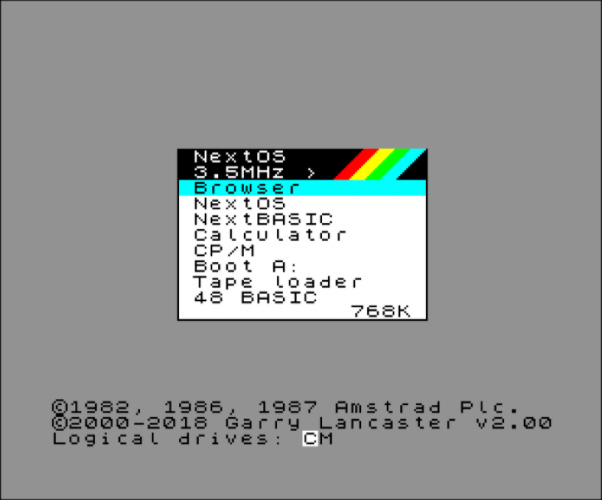
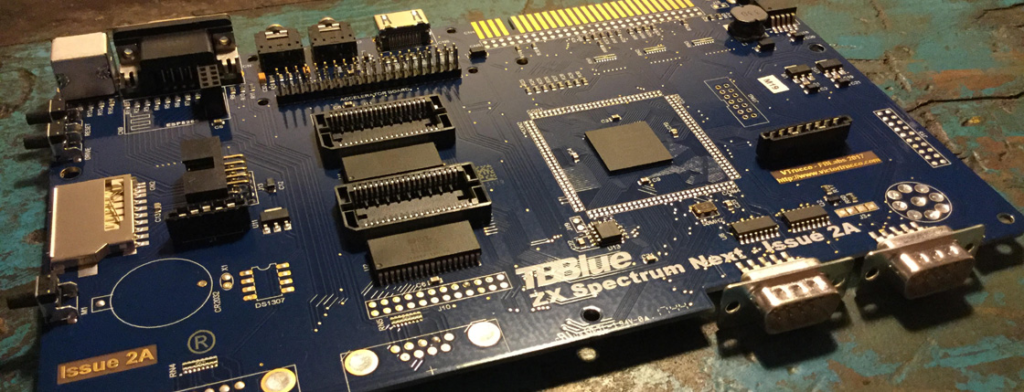
The C64 (and C64 mini)
It started with the tiny “mini” version that didn’t have a functional keyboard, but could run the C64 games and be connected to a HDMI TV. A full-sized, fully keyboarded version, called The C64 followed.
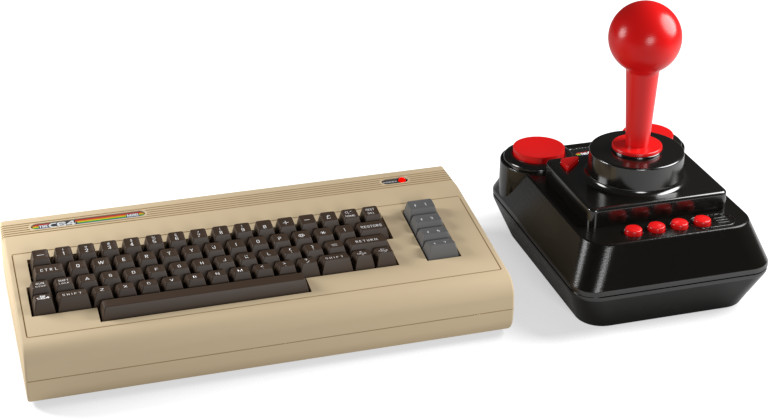
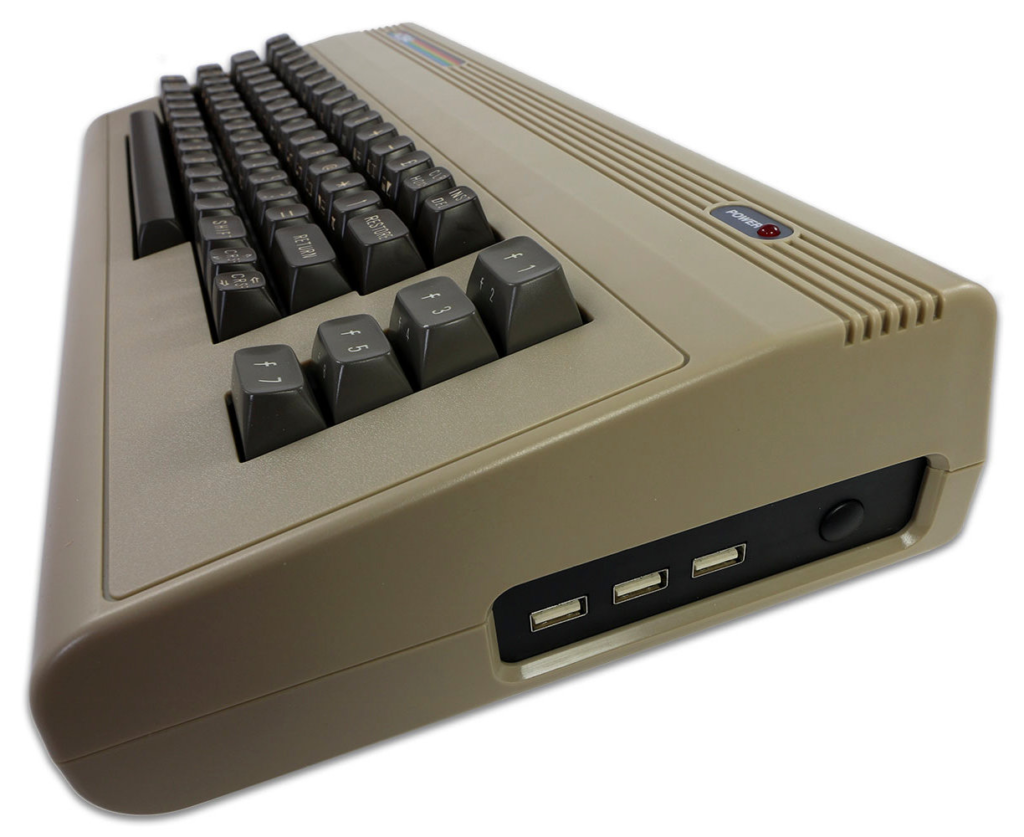
These two are… not 8-bit computers, they are actually emulators running on a totally “regular” ARM Linux, running VICE emulator. Their place in this article is just for stating this, so we can move on, as this is not an 8-bit computer.
Mega65
Mega65 is a “remake” or maybe an “actually make” of a computer that Commodore planned but never released – the C65. The official description of Mega65 says: “Complete 8-bit computer running around 40x faster than a C64 while being highly compatible. C65 design, mechanical keyboard, HD output, dual SD cards support, Ethernet, extended memory and more features increase the fun without spoiling the 8-bit feel.”
The MEGA65 implements (with FPGA, which means a hardware, but programmable chip, and not emulation) an up-to-40MHz 45GS02 CPU, unlike the original C65 that had a 3.5MHz 4510. The CPU in MEGA65 can address up to 64KiB of memory at a time, like most 8-bits, but also has a DMA controller able to copy and swap contents of memory within 1 MB address space! Just a reminder, when we define a processor as 8-bit, we are referring to the size of the data bus, not the size of the address bus or the internal registers.
You can get the MEGA65 from trenz-electronic for 666.66 EUR.
Entirely new systems
Here’s when some more bravery is required! There are a number of computers that don’t try to leverage tons of existing software and decades-old communities to extend what has already been there, but start completely fresh, as brand-new microcomputers that need your (or mine…?) help to get remarkable software!
Commander X16
The Commander X16 is a child of a prominent, sometimes controversial (in a very American way) figure in the retro-community, The 8-Bit Guy. He calls it his dream computer, and he did make this dream come true.
The computer has a 65C02S CPU (so a bit related to the Commodores as well), 40+512 KiB of RAM, and allows connecting PS/2 mouse and keyboard, as well as SNES-style gamepads. You can get a developer board of Commander X16 on texelec.com for 350 USD.
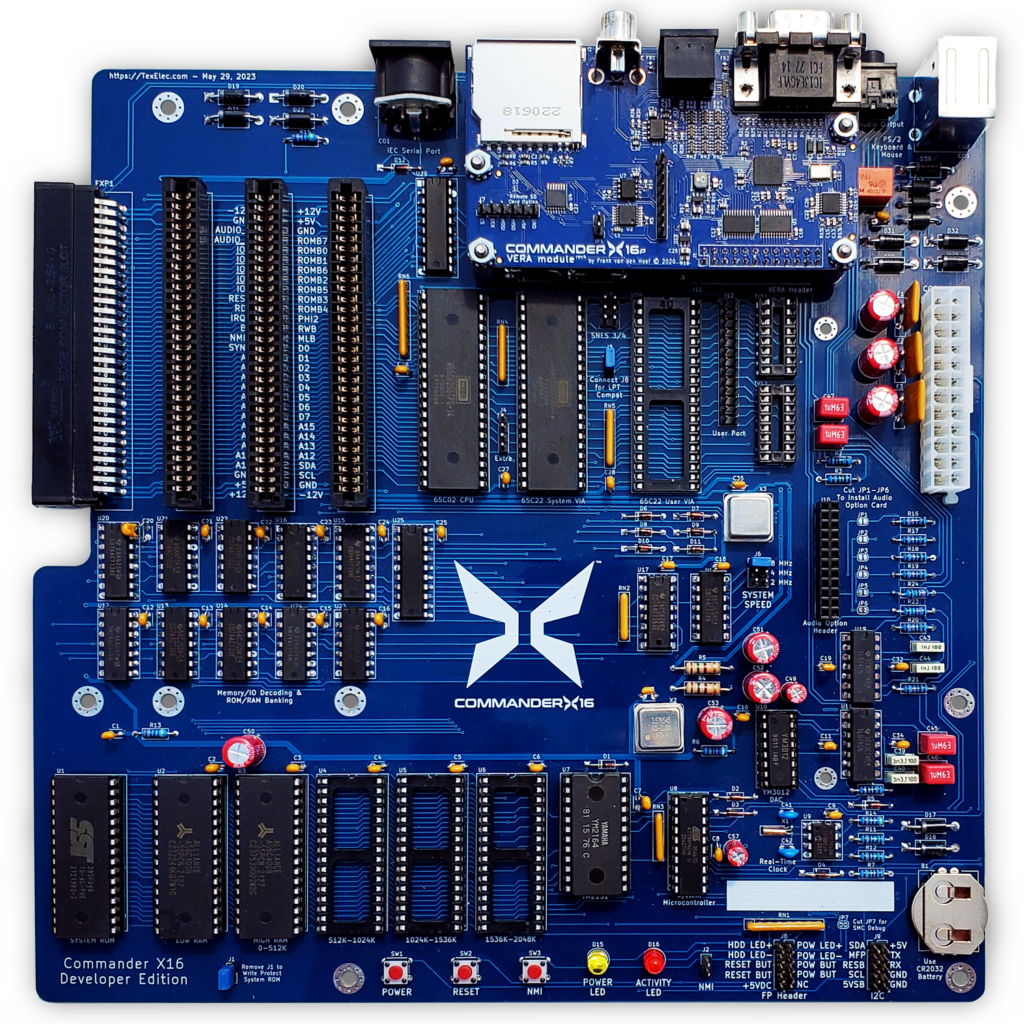


It has a nice FAQ here 🙂
As you can see, for now, you get a motherboard, plenty of expansion plans, and can connect an external keyboard and figure out a case for it. The result, I imagine, will be a small desktop-like computer with a PC-compatible, but Commodore-labeled keyboard (I only own a USB version of the X16 keyboard). The retail version is not there yet, so no “release date” applicable yet. If you’re looking for a pre-order of a case as well, check out the Lazer3D one.
What can you do with it? As with most, if not all 8-bits, you can go on exploring its possibilities by programming in BASIC as soon as you power it on, or in Assembly if you like pain fine-grained hardware control. But since the creator and promoter of the computer is pushing forward actively, we can expect more. One example of an excellently looking game is Planet X16, released in December 2023 for X16 and… Steam! 🙂
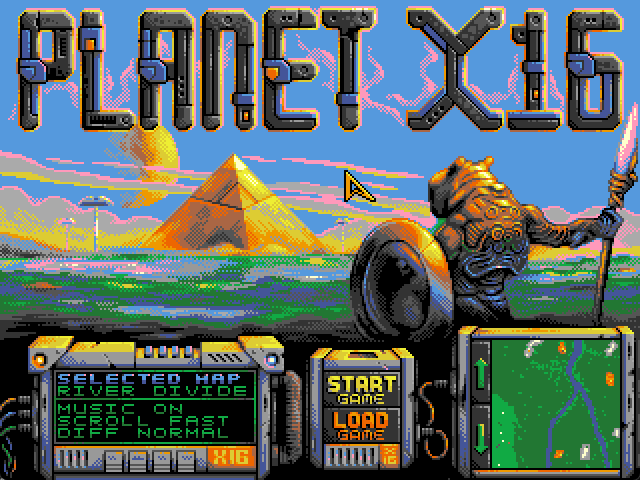
It’s a successor of previous strategy games targeting C64, and an incredible visual upgrade from them, which also proves a point in case that 8-bit games can be smooth and visually attractive just as much, as they were on the NES-like consoles, or at the arcade.
Colour Maximite
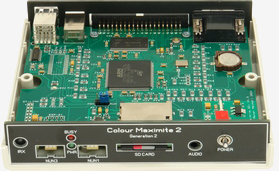
Half-contestant here – not 8-bit, but fully retro-spirited. The Colour Maximite, specifically the Colour Maximite 2, is a compact, standalone computer that revives the essence of early 80s home computers like the Tandy TRS-80, Commodore 64, and Apple II, but with contemporary technology. It utilizes an ARM Cortex-M7 32-bit RISC processor, allowing for a VGA output with resolutions up to 1920×1080 pixels and up to 16 million colors. The device operates with a USB keyboard and outputs to a standard VGA monitor, with programs being saved on a full-size SD card. Essentially, it boots straight into its own sophisticated BASIC interpreter, providing a blend of nostalgia and modern functionality. This device is inspired by its predecessors but leverages modern hardware for enhanced performance and graphics capabilities. REALLY enhanced.
You can grab it, for example, from PSLabs for 850 PLN for the Generation 2 DeLuxe version… Or you could if it was in stock. That’s about 200 USD, btw. You can also order the PCB and the parts, and make it yourself.
Believe it or not, but this is a demo written in BASIC running on this computer:
Colour Maximite 2 and other Geoff’s projects are all actually really interesting – you can find projects to run BASIC interpreters on Raspberry Pi Pico, essentially making your own really modest computer, but 20x smaller than they used to be. You can experiment on the edge of hardware and software. You can add VGA and Wi-Fi to these tiny things.
The Colour Maximite series has seen several iterations, each building upon the last in terms of capabilities and performance:
- Original Colour Maximite: Launched in September 2012, this model is the foundation of the Colour Maximite series. It was a significant step up from its monochrome predecessor, offering a full-featured BASIC interpreter, support for VGA displays, a PS2 keyboard connection, and an SD memory card for program storage. It features 128K of working memory and can display eight colors 3.
- Colour Maximite 2 (Gen 1 and Gen 2): Introduced in mid-2020 for the Gen 1 and mid-2021 for the Gen 2, these versions notably expanded on the hardware and software capabilities. Gen 2, in particular, brought improvements like 1920×1080 video resolution, support for 24-bit color, significantly more RAM, and additional features such as on-board support for a mouse, an accurate real-time clock, Wi-Fi module, and more. These iterations emphasize ease of programming and aim to deliver endless entertainment, learning, and fun through computing 1 2 5.
Zeal 8-bit computer
You don’t want to run FPGA or Arm, and you want a “real” CPU, hardware, unchangeable, battle-tested for the last 50 years? Zeal runs on a Z80 CPU! Yes, the same CPU that powered the ZX Spectrums, the Amstrad CPC, some Mortal Kombat arcade machines, and a close relative of it powered the GameBoy. And yes, Z80s are still in production, I just got a few.
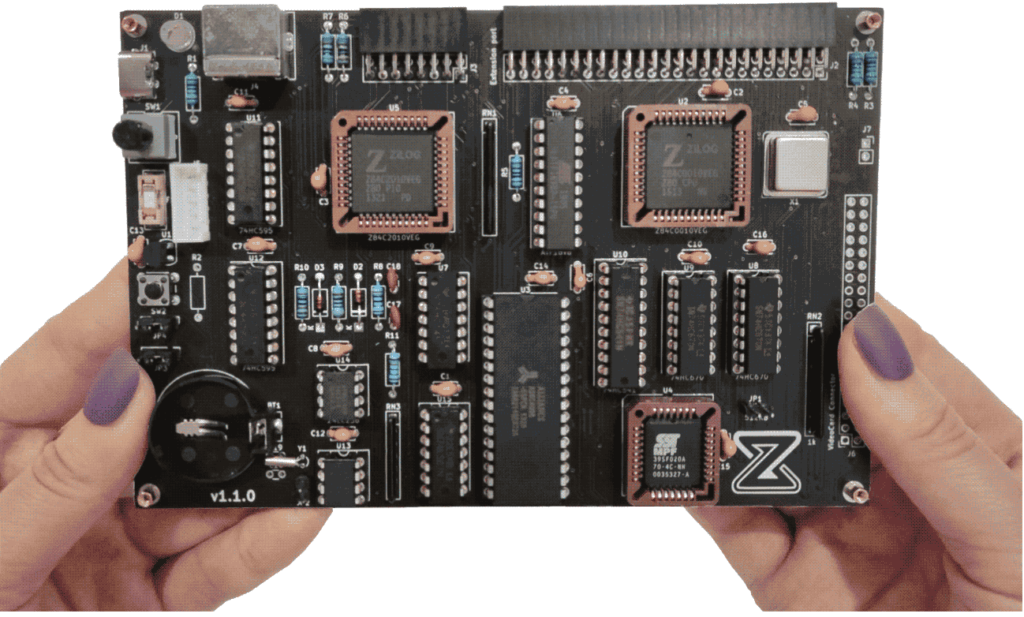
For 100 USD, you can get your own board. The computer runs at 10 MHz (2.5x faster than the Amstrad CPC or Spectrum), has 512 KiB of RAM (so 8x the most common memory capacity of the most successful 8-bits), can work with a PS/2 keyboard, is powered via USB-C (how modern!), and… doesn’t really have a video output.
The port on the right is for video adapter – a separate module to be attached. Curiously enough, while there are even GameBoy cartridge adapters for the Zeal, the video adapter is still in development (one can find videos including it on YT). Not something we can readily buy yet.
The computer runs its own open-source ZealOS. Both the computer, and the OS, are an excercise of learning how these work and how to create one, by a single person, signing themselves just as zeal8bit.
Agon Light
Another single-board computer based on the Z80 CPU. You can see the pattern – as the world of the 80s was divided into the Amstrad-Spectrum family and the Commodore-Atari family, the 8-bit legacy marches in two parallel paths: Z80-based and 6502-based.
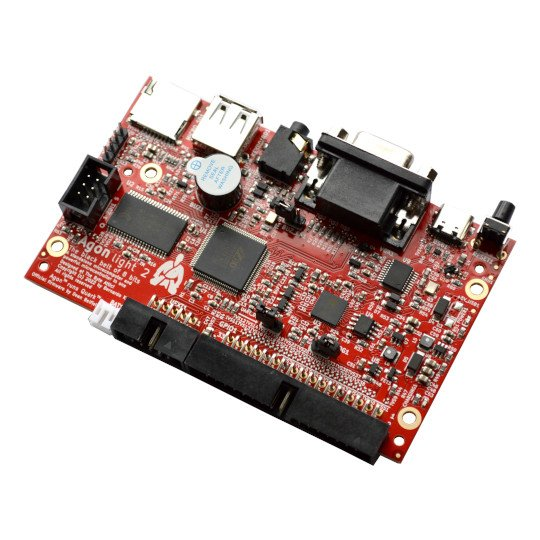
Agon Light has been around since 2021. For 50 EUR, you get a similar hardware setup to the Zeal: 512KB of RAM, but with VGA output, a PS/2 port for the keyboard again; while Agon Light runs at 20MHz, so pretty fast for a Z80. It can support up to 16 MiB (!) of memory, too. Color VGA output supports 320×200 64 colors, 512×384 16 colors, 640×480 16 colors, 1024×768 2 colors.
On the software side, we have a BBC BASIC – the most successful and one of the most powerful dialects – and a variant of CP/M 2.2 (I’m honestly surprised that it’s not CP/M 3.0).
There’s a lot of details and manuals, as well as extensions information about the Agon on its site at The Byte Attic – it really thrives, and got an awesome keyboarded case as well.
RC2014
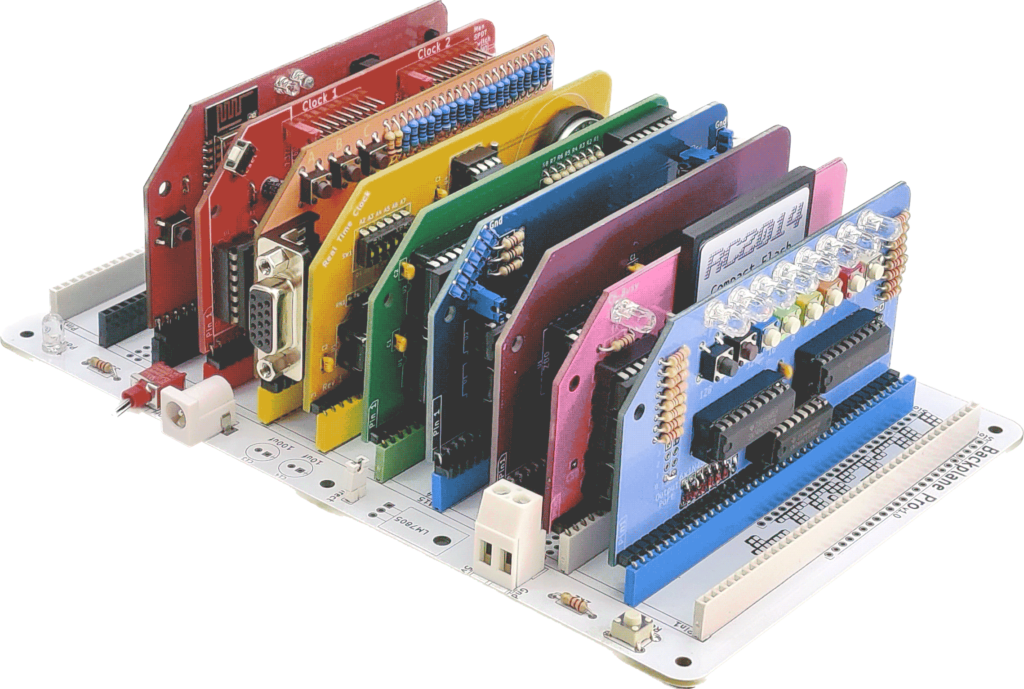
This one may sound like a chip powering the Raspberry Pi to you, so to avoid further confusion, RP2040 is a microcontroller chip designed by Raspberry Pi, while RC2014 is a full, modular, 8-bit computer, pictured above. To quote the homepage:
RC2014 is a simple 8 bit Z80 based modular computer originally built to run Microsoft BASIC. It is inspired by the home built computers of the late 70s and the computer revolution of the early 80s. It is not a clone of anything specific, but there are suggestions of the ZX81, UK101, S100, Superboard II and Apple I in here. It nominally has 8K ROM, 32K RAM, runs at 7.3728MHz and communicates over serial at 115,200 baud.
There’s also a 64 and a 512KB variant now, so you can run the CP/M operating system as well. You can get a ready to use set, or you can solder most of it yourself, if you like. I will, and let me know if you want a video with me trying!
The kits, depending on features, and amount of buff, are ranging 50-380 GBP. The smallest one gets you a Microsoft BASIC environment that you can connect over via the serial port, while the full RC2014 [Zed] Pro Pride (colorful edition for the June 2023 Pride month) as pictured above, has several modules available such as a Compact Flash card module, dual serial, 64 or 512KB of RAM, a real time clock (so it keeps track of, you guessed it, the real world time), a VGA terminal (yay!) based on a Raspberry Pi Pico (is this cheating?), a Wi-Fi module.
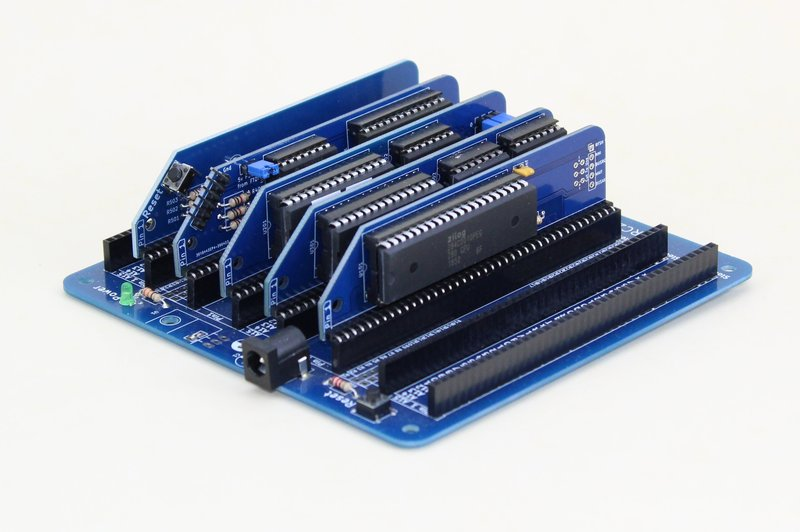
The Micro Beast
If you’re more into “do it yourself” attitude, and less into having a high-resolution screen, or a screen at all, this one is for you as well. A representative of dozens of homemade computers you can find, consists of a keyboard, a single-line alphanumeric display like in the 90s “small hi-fis” (they were never HiFi), and a bunch of chips.
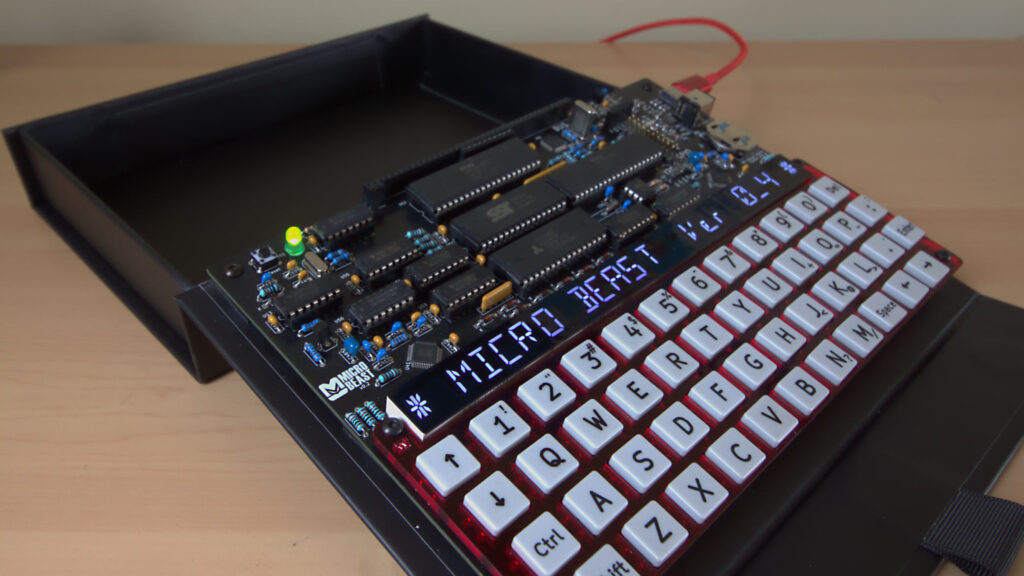
You can get a kit for 200 EUR – it includes a PCB with the surface mount components pre-installed, so you need regular, not advanced soldering skills. It comes with a ROM containing CP/M 2.2, so you can actually run 80s software on it freely!
Non-retro vibe
Technically, countless modern devices are 8-bit computers as well, as they often run on chips that are, in fact, 8-bit CPUs, such as AVR ATmega8A, a popular microcontroller with 8kB of programmable ROM and 1kB of RAM built-in.
The most popular 8-bit computers of the 21st century would include for example, Arduino UNO, based on the Microchip Technology ATmega328 8-bit Microcontroller (MCU).
Why?
I mean, if you ask this question, not sure how you got here.
Why not? In a world where smartphones have more computing power than the Apollo missions and fridges can order groceries, there’s something charmingly rebellious about embracing the simplicity of 8-bit computing.
For many, it’s a nostalgic trip down memory lane, back to a time when loading a game meant carefully aligning a cassette tape and praying to the computer gods that it wouldn’t crash halfway through. It’s a chance to relive the joy of typing in BASIC programs from computer magazines and discovering the thrill of making your own text adventures.
But it’s not just about nostalgia. The constraints of 8-bit systems foster creativity and problem-solving skills. With limited memory and processing power, every byte counts. Developers must be clever and efficient in their coding, leading to innovative solutions and a more profound understanding of how computers work at a fundamental level.
Moreover, the 8-bit community is a welcoming and collaborative one. From online forums to retro computing events, enthusiasts share knowledge, resources, and a passion for keeping these classic machines alive. It’s a space where tinkerers, hobbyists, and curious minds can come together to learn, create, and have fun.
So why 8-bit computing in 2024? Because it’s a delightful blend of nostalgia, creativity, and community. It’s a reminder that sometimes, less is more, and that there’s still plenty of joy and discovery to be found in the humble 8-bit realm. Plus, it’s a great excuse to break out those old floppy disks and show everyone what real retro gaming looks like!
In this article
| Computer Name | Release Date | Price | Purchase Link | Description |
|---|---|---|---|---|
| ZX Spectrum Next | 2020 (1st edition) 2023 (2nd edition) | ~£300 | Official Shop | FPGA-based reimagining of the classic ZX Spectrum with enhanced capabilities, based on Z80N |
| The C64 (formerly C64 Maxi), emulator, not 8-bit | 2019 | $119.99 | Retro Games Ltd | A full-size replica of the original Commodore 64 with modern enhancements, emulates the C64. |
| MEGA65 | 2022 | €666 | Trenz Electronic | A modern realization of the unreleased Commodore 65 computer, powered by 45GS02 CPU |
| Commander X16 | 2022 (DevKit) 202X (Full release) | $350 (Dev edition) | TexElec | A new 8-bit computer inspired by the Commodore 64 and VIC-20 |
| Agon Light | 2023 | £48.75 | The Pi Hut | A new 8-bit computer based on the Zilog Z80 CPU |
| RC2014 | 2014 | £99 – £150 (depending on configuration) | Official Website | A modular, expandable 8-bit computer based on the Zilog Z80 CPU |
| Zeal 8-bit Computer | 2021 | $149.99 | Official Website | A compact, all-in-one 8-bit computer based on the Z80 CPU |
| Color Maximite 2 (a 32-bit computer) | 2021 | $165.50 890PLN | RicTech.nz PSLabs.pl | A standalone “8-bit like” computer with color VGA output and built-in BASIC interpreter, ARM Cortex M7 |
| Micro Beast | 2024 | $215 | Official site | A compact 8-bit computer based on the Z80 CPU |



Along the lines of the RC2014, there is also some newer stuff like RCBus to be considered. https://smallcomputercentral.com/ I’ve built a few (RC2014, Z50Bus, RCBus) now and they are all great. For me, your line “The constraints of 8-bit systems foster creativity and problem-solving skills.” is where I have the most fun with these systems.